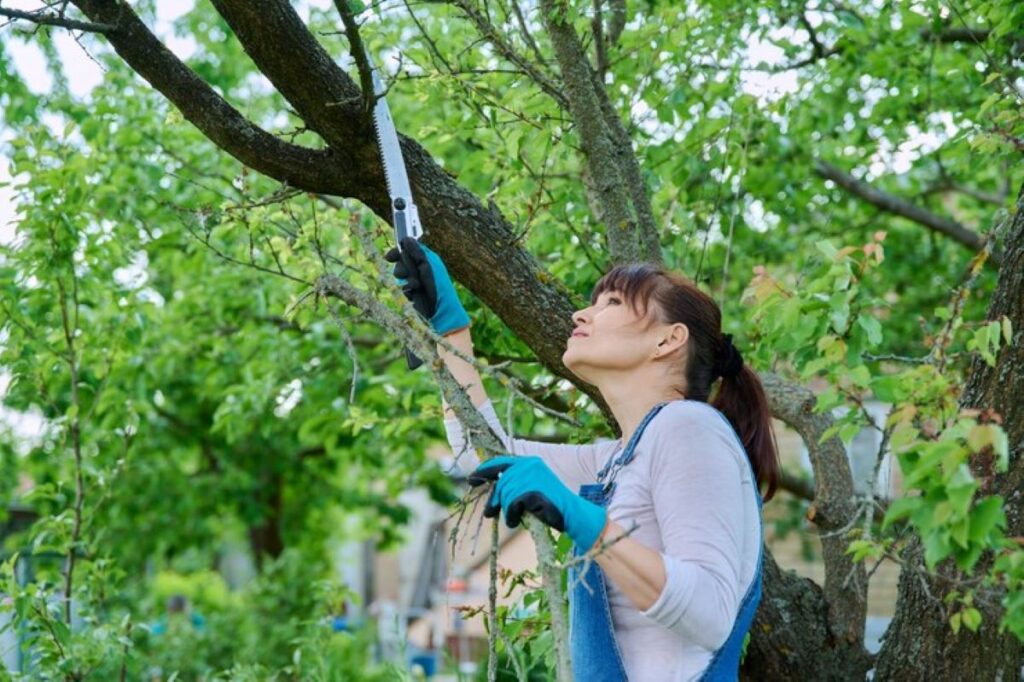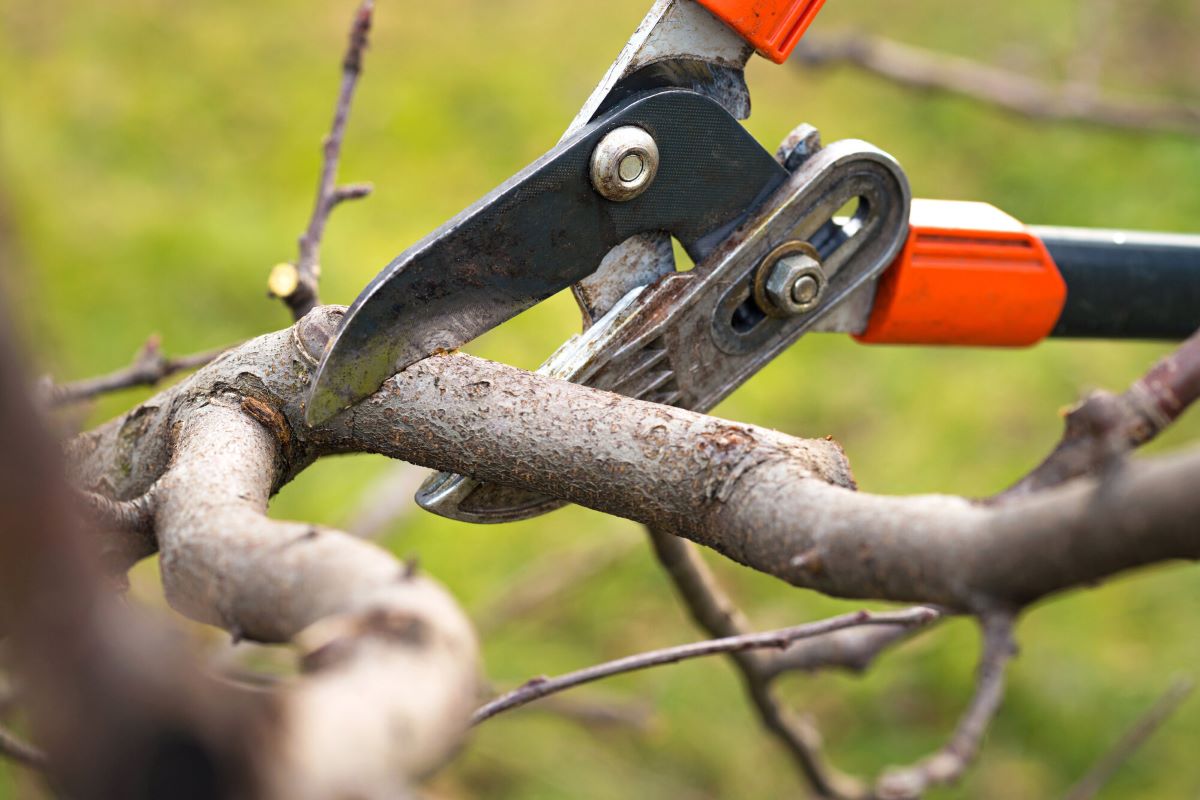
Tree Pruning Cost Explained: Budgeting for Your Tree Care
Understanding the costs associated with tree pruning is crucial for homeowners who want to maintain their outdoor space while being mindful of their budget. This article will guide you through the basics of tree pruning, break down the associated costs, offer advice on budgeting, and discuss whether to hire a professional or tackle it yourself.
Understanding the Basics of Tree Pruning
Tree pruning is an essential practice that involves the selective removal of certain parts of a tree, such as branches, buds, or roots. This process not only enhances the aesthetic appeal of the tree but also promotes healthy growth and encourages the development of stronger branches. Proper pruning techniques can lead to a more balanced tree structure, which is crucial for its longevity and resilience against environmental stressors.
Understanding tree pruning pricing is vital for homeowners, as it can significantly affect the health of their trees. Most trees require pruning at various stages of their lives; thus, knowledge of the best practices is fundamental for optimal results. For instance, young trees benefit from formative pruning to establish a strong framework, while mature trees may need maintenance pruning to remove any dead or diseased wood and to manage their size and shape.
Why Tree Pruning is Essential
One of the primary reasons for pruning is to maintain tree health. By removing dead or diseased branches, you allow the tree to focus its energy on growing new, healthy foliage. Additionally, pruning can help reduce the risk of falling branches, which can pose a hazard to people and property. Regular maintenance not only keeps the tree safe but also enhances its overall vitality, making it more resistant to pests and diseases.
Pruning also encourages better air circulation and light penetration within the canopy of the tree, which can prevent issues such as mold and mildew growth. In some cases, tree pruning can even enhance flowering and fruit production by enabling the tree to allocate more resources to fruit-bearing limbs. This is particularly important for fruit trees, where strategic pruning can lead to a more abundant harvest, ensuring that the tree remains productive for years to come.
Factors that Influence Tree Pruning Costs
Several factors can influence the overall cost of tree pruning. These include the size and location of the tree, the condition of its branches, the type of tree, and the specific services needed. Understanding these factors will help you expect and budget better for the expense. Additionally, the time of year can also play a role in pricing, as some companies may offer discounts during the off-peak seasons.
- Tree Size: Larger trees requiring more complex cutting can increase labor time and expertise needed, thus raising costs.
- Location: Trees near power lines or structures may require additional safety measures, inflating the price.
- Health of the Tree: Diseased trees may require specialized care, which can also elevate the cost.
Furthermore, the experience level of the arborist or tree care company can also impact the cost. Highly skilled professionals with a proven track record may charge more for their services, but their expertise can lead to better outcomes for your trees. It’s also worth considering that investing in quality pruning can save money in the long run by reducing the likelihood of needing extensive tree removal or emergency services due to neglect.
Breaking Down the Cost of Tree Pruning
When considering the overall expenses, it is helpful to break down the costs associated with tree pruning into labor, equipment, material costs, and more. Understanding these aspects will provide a clearer picture of how to budget effectively.
Labor Costs for Tree Pruning
Labor costs typically constitute the most significant part of the total expense associated with tree pruning. The hourly rate for tree care professionals can vary widely depending on location, expertise, and the complexity of the job.
On average, you might expect to pay anywhere from $50 to $150 per hour for professional pruning services. Factors such as team size and time required for the job can impact the final labor cost. Additionally, some companies may offer flat rates for specific services, which can be beneficial for budgeting purposes. It’s also worth noting that hiring certified arborists, who possess advanced knowledge of tree biology and health, may come at a premium but can lead to better long-term outcomes for your trees.
Equipment and Material Costs
Professional tree pruners utilize a range of specialized tools—a requirement that often adds to the cost. Common tools include saws, pruners, chainsaws, and rigging equipment. Depending on the service provider and the complexity of the pruning required, the costs for equipment can sometimes be included in the overall quote provided to you.
If you decide to prune a tree yourself, you’ll need to factor in the costs of purchasing or renting these tools. Initial investment in quality equipment can be significant, but it can save you money in the long run if you plan on regular pruning. Additionally, safety gear such as helmets, gloves, and goggles should not be overlooked, as they are crucial for protecting yourself during the pruning process. Investing in proper equipment not only enhances safety but also improves the efficiency and effectiveness of your pruning efforts.
Costs Based on Tree Size and Type
The type of tree and its size significantly sway the costs associated with pruning. Smaller, young trees are typically less expensive to prune compared to mature trees, which may require more labor and specialized skills.
Moreover, different species come with their own peculiar growth patterns and structural characteristics, affecting the complexity of the pruning required. For instance, flowering trees often need more meticulous care compared to standard ornamental trees. Additionally, trees that are situated near power lines or structures may necessitate more intricate pruning techniques, which can further elevate costs. Understanding the specific needs of your trees can help you communicate effectively with your tree care professional, ensuring that you receive accurate estimates and tailored services that meet the unique requirements of your landscape.

Budgeting for Regular Tree Care
Establishing a yearly budget for tree care, including pruning costs, is an integral part of responsible home maintenance. Regular upkeep can prevent larger, more expensive interventions later on, benefiting both your trees and your finances. Trees not only enhance the aesthetic appeal of your property but also contribute to air quality and provide shade, making their health a priority for any homeowner.
Estimating Annual Tree Pruning Costs
To estimate annual tree pruning costs, start by assessing how many trees you need to prune regularly and their specific needs. A general guideline is to consider pruning once or twice a year, depending on the trees’ growth speed and health status. Additionally, different species may require varying techniques and frequencies for optimal health, so it’s wise to research the specific needs of the trees in your landscape.
A basic rule for budgeting is to expect to allocate between $200 and $600 annually for a few average-sized trees. Larger trees or more complex jobs will naturally increase this figure, requiring a more substantial budget. It’s also important to factor in the potential costs of disease treatment or pest control, which can arise if trees are not pruned properly. Keeping a close eye on your trees can help you catch issues early, potentially saving you money in the long run.
Saving Money on Tree Pruning
There are several strategies you can employ to save money on tree pruning. One effective method is to schedule maintenance during the off-peak season, typically late fall or winter when tree care services may offer discounts due to decreased demand. Additionally, some companies may provide package deals for multiple services, such as fertilization or pest management, which can further reduce overall costs.
Engaging in regular care, such as basic trimming throughout the year, can also reduce the intensity and costs associated with professional pruning services. Some homeowners even collaborate with neighbors, pooling resources to hire professionals for a bulk rate. Furthermore, investing in some basic tree care tools can empower you to handle minor pruning tasks yourself, allowing you to maintain your trees more frequently without incurring additional costs. However, it’s essential to educate yourself on proper techniques to avoid damaging the trees, as improper pruning can lead to long-term health issues.
Hiring Professional Tree Pruners: What to Expect
If you choose to hire professional tree pruners, knowing what to expect can ease the process and help ensure satisfactory results. Familiarizing yourself with the working process, communication, and fees will help in selecting the right service for your needs.
Evaluating Tree Pruning Services
Before hiring a tree pruner, take the time to evaluate potential companies. Important factors to consider include their certification, insurance, and online reviews. It’s also wise to look for experienced pruners who understand the specific needs of your tree species.
Requesting quotes from several service providers can give you leverage and help you make a well-informed decision. Always ensure that the costs are transparent and break down labor, equipment, and materials clearly.
Questions to Ask Your Tree Pruner
When you consult with a professional tree pruner, having a set of essential questions prepared will help clarify the process and expectations. Some insightful questions include:
- What’s your experience with this type of tree?
- Can you provide references or examples of past work?
- What safety measures do you have in place?
- Do you have insurance for your services?
These questions will assist in evaluating the professionalism of your pruner and help ensure quality service.

DIY Tree Pruning: Pros and Cons
For some homeowners, the prospect of DIY tree pruning can be appealing, especially for smaller trees or lighter maintenance. However, it comes with its own set of advantages and disadvantages that should be weighed before making a decision.
Necessary Tools for DIY Tree Pruning
If you decide to take on tree pruning yourself, a basic set of tools is essential for effective and safe work. Common tools include:
- Bypass pruners for small branches
- Pruning saws for medium to larger limbs
- Chainsaws for large trees
- Loppers for higher branches
Investing in quality tools is vital, as they enhance safety and efficiency during the pruning process.
Safety Considerations for DIY Tree Pruning
Safety should always be your top priority when pruning trees. Proper protective gear, such as gloves, goggles, and helmets, can significantly mitigate the risk of injury. Additionally, be sure to assess the stability of your ladder, if used, and avoid pruning in adverse weather conditions.
If you are uncertain about your skills or the safety of the job, it may be worthwhile to seek professional assistance to avoid potential accidents or damage to the trees. Always prioritize a safe environment for yourself and others around you.
In conclusion, understanding the costs associated with tree pruning and how to budget for them can significantly impact the health of your trees and your wallet. Whether you decide to hire professionals or prune your own trees, knowledge and preparation are key to achieving the best results.
More to Read : Why Tree Pruning Services Are Essential for Residential Properties

